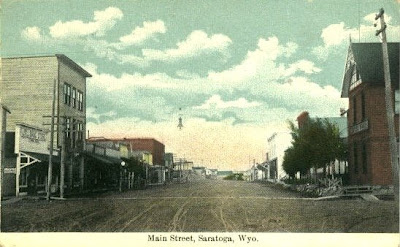
Everyone wants answers to make solid decisions. The art is to recognize the right ones when you spot them.
By Rob Carrigan, robcarrigan1@gmail.comNewspaper publishing is really the combined, life-long study of small-town philosophy, leadership and group dynamics as it relates to ethics and resource allocation. As such, I often ask others how to practice the art.
And I get answers — but I’m never really sure that they are the right ones.
“I wonder if we are all strung together by a universal ethic or model,” says my former football coach, Carl Rice, who lived and coached in Akron, Colo, and Wyoming.
“I think one can recognize right and wrong, especially in each other. I have been blessed to do what I do. I realize I have touched a lot of people. Think how many you touch with your decisions. I realize that much of the time we concentrate on the monster, which is the far removed machine. The truth is — the struggle rages in the individual. Ethics doesn’t just happen, it is a practice.”
But in a small town, is there an abundance or shortage of practitioners, and is change the agent? I’ll relay an answer from someone I have never met before, but feel connection to. Coy Hobbs edited the Saratoga Sun, in Saratoga, Wyo. When I contacted him a few years ago, he was editor of the same small-town newspaper I managed more than 20 years prior.
“There are frequent business startups (and closings) in town as the test for any local business remains ‘Can they make it through the winter?’” according to Hobbs.
“Saratoga's population is down to less than 1,700. The LP (Louisiana Pacific) sawmill closed a year ago, the coalmines at Hanna have closed, and the school district is leading the state in enrollment declines. We don't have problems here, just challenges and opportunities to see if we are as good as we think we are.
“Despite the changes, Saratoga is still one of the truly neat places in the world. Some say it will be the next Jackson Hole, to which most reply ‘Over my dead body.’ We're trying to reach a compromise between the two positions. I am still amazed by the wealth of talent and experience the residents of this quaint, little mountain village possess. It makes you want to believe that just about anything is possible here – and I'm just the cynical newspaper editor, not the chamber of commerce exec.”
Good publishers and editors have a knack of finding and printing what people want to read.
Jerry Elijah Brown, in the forward of the biography, “High Adventure” about noted Alabama Newspaper publisher Porter Harvey (written by his son, Sam) pays tribute to that effort.
“He published what readers need and want,” Brown said of Porter Harvey. “Not only what the cops, courts, and councils of governments were doing, but also how much rain was falling in different hamlets, where a column of ants in a bank parking lot was going, how the coin laundry was finally getting a restroom and which hymn and stanza a man was singing when he dropped dead at a church service. Porter knew how to excite by understatement — a rare talent that involves skill at both writing and display.”
But as we noted before, everyone wants answers to make solid decisions. The art is to recognize the right ones when you spot them.
###









